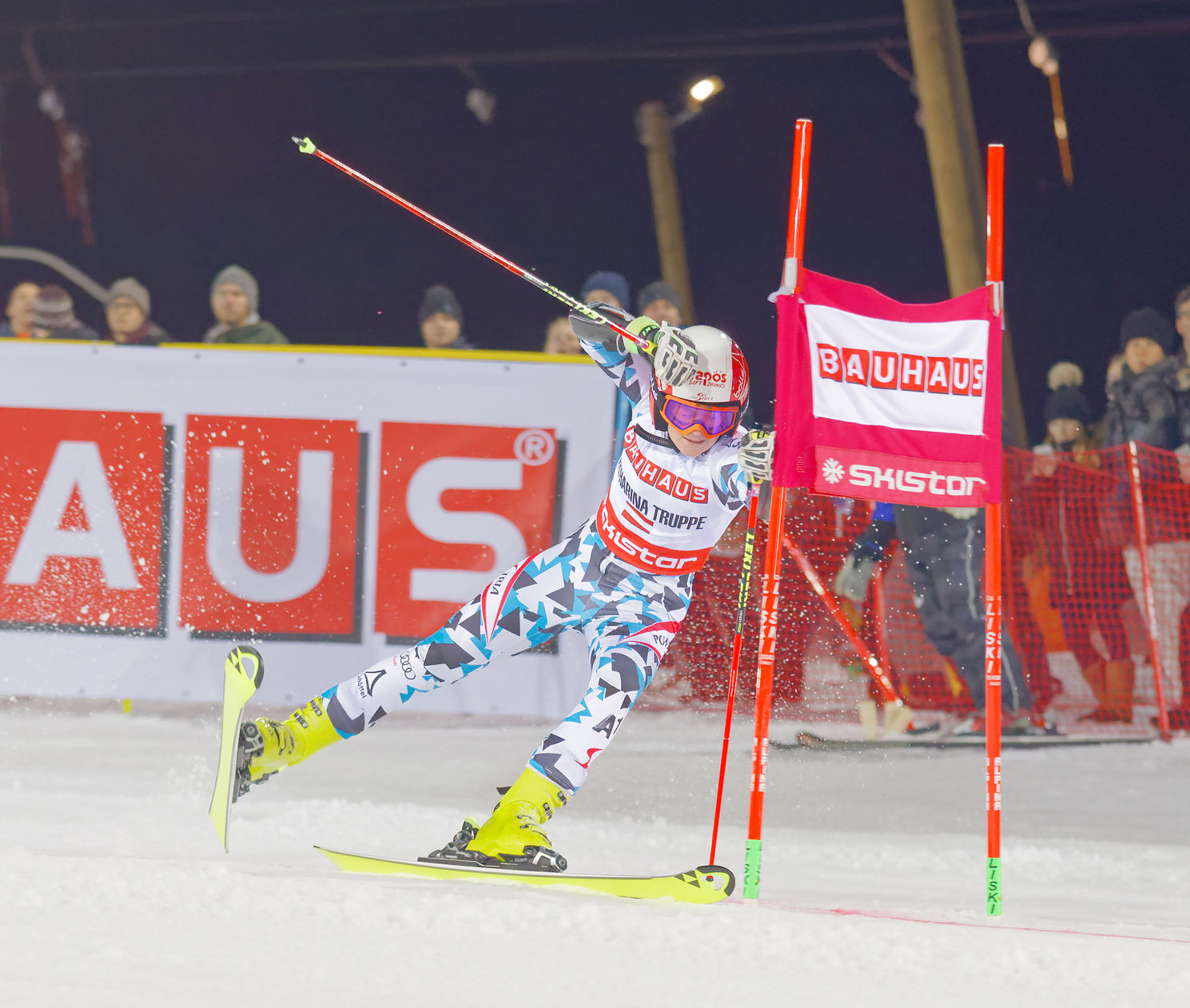
Tatharina Truppe close to falling in the downhill skiing audi fis ski world cup. january 31, 2017, stockholm, sweden
Olympic gold medalist Picabo Street, 1998 winner of the downhill in Nagano, once told a reporter, “Fear is the number one enemy when you’re racing; when you’re afraid your center of balance is back, which is very detrimental to your health.”
Detrimental, indeed. Scientific studies have found that, along with increasing the risk of falling and serious injury, fear of falling in daily life leads to activity restriction, a loss of independence, reduced quality of life, and an increased chance of morbidity and death.
Still, it might seem that a healthy fear of falling makes sense when travelling at 80 miles per hour down a steep incline on a couple of 3-inch wide slats. The problem, as Street so aptly describes, is that fear isn’t just a feeling – it’s a movement strategy that can automatically cause us to lean away from a perceived threat. Think “fight, flight, or freeze.” The fear response can include a reflexive backward shift of weight away from the precipice and a stiffening of muscles. The combination of leaning back and stiffening up makes us less stable and at the same time less able to adaptively respond to changing conditions.
Simply stated, the fear of falling increases the risk of taking a fall
That holds true when the challenge to balance isn’t one we chose for the thrill of it but, rather, one we encounter due to health problems and/or aging — illness, arthritis, injury, neuropathy, vision problems, loss of strength and/or flexibility, dizziness, medications, to name a few. As with skiing at high speeds on steep terrain, these conditions increase the risk of falling. And, like skiing, the ability to successfully handle that increased risk requires overcoming fear.
What Can We Do?
The link between emotion and balance runs deep. More than simply causal, how we feel and how stable we are on our feet interconnect with one another in the larger canvas of our state of being. That interconnection reveals itself in common language – on shaky ground, thrown for a loop, sure-footed, standing tall, in a slump — physical expressions that denote a feeling or mindset.
Medicine has also long noted the connection between anxiety and unstable balance, and in recent years, brain research has uncovered multiple neural links between balance and emotion processing regions of the brain. In clinical studies on depression and posture, slumped posture – which destabilizes balance – has been found to occur in major depression.
One study on posture and depression found that an upright seated posture as compared to a slumped posture improved mood and had “protective effects” during a psychological stressor. Slumped participants felt “more fearful, hostile, nervous, quiet, still, passive, dull, sleepy, and sluggish.” In sharp contrast, upright participants reported higher self esteem and reduced fear along with feelings of enthusiasm, excitement, and strength. The words of Oscar Hammerstein come to mind — “whenever I feel afraid, I hold my head erect...”
Good posture does more than improve how we feel; it helps us balance. Because balance requires keeping our center of mass within safe limits over our base of support, we’re the most stable in standing when the upper body is vertically aligned over our hips and feet. If I slump or lean too far one direction or another my balance begins to destabilize.
Postural adjustments that keep us safely over our feet occur automatically — as do the postural changes in fear, anxiety and depression that cause our upper body weight to shift toward unsafe territory. Fortunately, we have the means to go beyond auto pilot. By bringing awareness to the sensory side of balance we can lay a foundation for maintaining and regaining stable posture as well as for reducing the fear of falling, which in turn decreases the risk of taking a fall.
Try this simple exercise: Align your posture with gravity by feeling your upper body weight (head, shoulders, ribcage) aligned over your hips, legs and feet. Aligned posture allows the skeleton to support us from the ground up, freeing up muscles to relax. As you stand aligned and tall, feel your weight drop with gravity. The combination of awareness, good alignment and relaxation equals stable posture plus improved agility. And because of the close interconnection of posture and emotion, improving postural alignment helps improve our emotional state as well.
A balance challenge can create fear, which in turn destabilizes balance. We can break the negative feedback loop by intentionally feeling and aligning posture with gravity – improving both our physical and emotional equilibrium.


2 comments